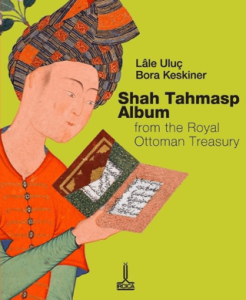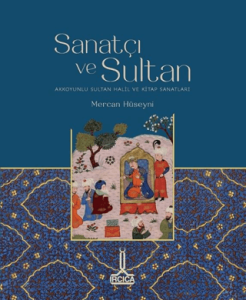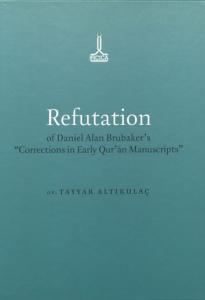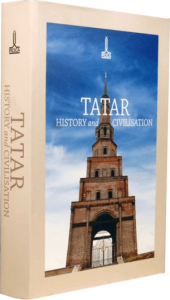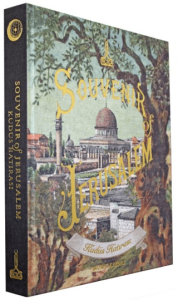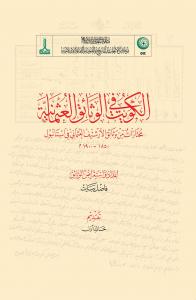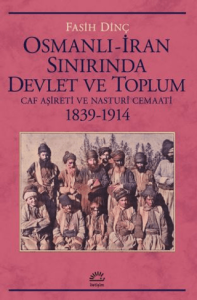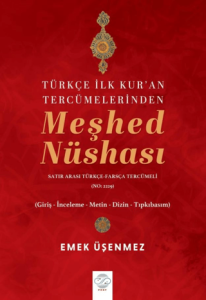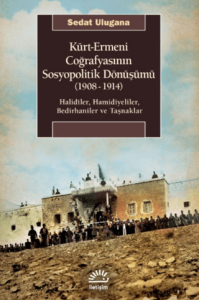Athar al-Qahira al-Islamiyya fi al-Asr al-Uthmani - Islamic Monuments of Cairo in the Ottoman Period (3 vols in 5 books) (ARAPÇA)

Athar al-Qahira al-Islamiyya fi al-Asr al-Uthmani - Islamic Monuments of Cairo in the Ottoman Period (3 vols in 5 books) (ARAPÇA)
Prepared by Mohamed Abul Amayem
Edited with introduction by Ekmeleddin İhsanoğlu
İstanbul, Vol. 1: 2003, Vol. 2 (2 books): 2011, Vol. 3 (2 books): 2015
ISBN 92-9063-128-5 (set) - ISBN 92-9063-129-5 (vol.1), ISBN 92-9063-130-9 (vol.2), ISBN 978-92-9063-278-8 (vol.3)
Volume I: Mosques, Madrasas & Takiyas, IRCICA, Istanbul, 2003
The main purpose of this book is to examine the architectural works in Egypt constructed during the Ottoman period (1517-1914 A.D.) from the viewpoint of the relationship between Turkish administrative circles and the Egyptian people.
The first volume of Islamic Monuments of Cairo in the Ottoman Period contains information on mosques, madrasas (schools), zawiyas and takiyas (religious lodges), etc. The following volumes to be published will encompass information on houses, caravanserais, sabils, burial shrines and other buildings.
This book attempts to give a detailed record of Ottoman buildings in Cairo. The entries, which are arranged in chronological order, include the official registration number, the date of construction, the names of patrons and the location in Cairo. This is followed by a description of the building, information on its status. Finally, the main sources mentioning the building in question are cited.
Vol. II: Public fountains, schools and watering places, IRCICA, Istanbul, 2011
This is the second book under the title Islamic Monuments of Cairo in the Ottoman Period, after the first one published in 2003 which was devoted to mosques, medreses, tekkes and zawiyas (religious lodges). The second book consists of two volumes itself and focuses on another type of structures that was widespread in Egypt during the Otoman period, namely public fountains, elementary schools, and watering places for animals (abreuvoirs). The book covers 474 structures dating from the period from the beginning of 16th to 20th century AD. For each structure the reader will find a detailed description, indication of its place supplemented with detailed maps, its owner/affiliation, evolution of its state past and present, and restorations. The fountain (sabil) which was part of humanitarian public works was often accompanied by an elementary school (kuttab). This whole structure could be attached to a large building: a mosque, a khan, etc. or it could be independent. As to watering places, which were located in streets underneath buildings, they were in the same way, public works to provide water for animals. Water was carried from the Nile to fill the underground reservoirs from where it would be drawn for use through wells. The contents of the book’s section on these watering places and their wells indicate how largely widespread these were around Cairo. It describes the extant ones and records those having disappeared. The author, Mr. Mohamed Abul Amayem is an eminent specialist of the history of architecture in Cairo, formerly associated with the Egyptian Antiquities Organization and then the Institut Français d’Archéologie Orientale (IFAO), Cairo, and presently with IRCICA to prepare this series of volumes on Islamic Monuments in Cairo under the editorial supervision of Prof. Ekmeleddin İhsanoğlu. Abul Amayem has for long years devoted himself to the study of old monuments, including Pharaonic, Coptic, Islamic monuments, observing their state, damages and restorations on them.
This book will be highly useful for all those interested in the urban structures and architecture, especially history of Ottoman architecture in Cairo, where across centuries Ottoman monuments have been more numerous than those from other periods, and will help researchers discover the features of underground structures (cisterns) and monuments on surface.
Athar al-Qahira al-Islamiyya fi al-Asr al-Uthmani - Islamic Monuments of Cairo in the Ottoman Period (3 vols in 5 books) (ARAPÇA)
Prepared by Mohamed Abul Amayem
Edited with introduction by Ekmeleddin İhsanoğlu
İstanbul, Vol. 1: 2003, Vol. 2 (2 books): 2011, Vol. 3 (2 books): 2015
ISBN 92-9063-128-5 (set) - ISBN 92-9063-129-5 (vol.1), ISBN 92-9063-130-9 (vol.2), ISBN 978-92-9063-278-8 (vol.3)
Volume I: Mosques, Madrasas & Takiyas, IRCICA, Istanbul, 2003
The main purpose of this book is to examine the architectural works in Egypt constructed during the Ottoman period (1517-1914 A.D.) from the viewpoint of the relationship between Turkish administrative circles and the Egyptian people.
The first volume of Islamic Monuments of Cairo in the Ottoman Period contains information on mosques, madrasas (schools), zawiyas and takiyas (religious lodges), etc. The following volumes to be published will encompass information on houses, caravanserais, sabils, burial shrines and other buildings.
This book attempts to give a detailed record of Ottoman buildings in Cairo. The entries, which are arranged in chronological order, include the official registration number, the date of construction, the names of patrons and the location in Cairo. This is followed by a description of the building, information on its status. Finally, the main sources mentioning the building in question are cited.
Vol. II: Public fountains, schools and watering places, IRCICA, Istanbul, 2011
This is the second book under the title Islamic Monuments of Cairo in the Ottoman Period, after the first one published in 2003 which was devoted to mosques, medreses, tekkes and zawiyas (religious lodges). The second book consists of two volumes itself and focuses on another type of structures that was widespread in Egypt during the Otoman period, namely public fountains, elementary schools, and watering places for animals (abreuvoirs). The book covers 474 structures dating from the period from the beginning of 16th to 20th century AD. For each structure the reader will find a detailed description, indication of its place supplemented with detailed maps, its owner/affiliation, evolution of its state past and present, and restorations. The fountain (sabil) which was part of humanitarian public works was often accompanied by an elementary school (kuttab). This whole structure could be attached to a large building: a mosque, a khan, etc. or it could be independent. As to watering places, which were located in streets underneath buildings, they were in the same way, public works to provide water for animals. Water was carried from the Nile to fill the underground reservoirs from where it would be drawn for use through wells. The contents of the book’s section on these watering places and their wells indicate how largely widespread these were around Cairo. It describes the extant ones and records those having disappeared. The author, Mr. Mohamed Abul Amayem is an eminent specialist of the history of architecture in Cairo, formerly associated with the Egyptian Antiquities Organization and then the Institut Français d’Archéologie Orientale (IFAO), Cairo, and presently with IRCICA to prepare this series of volumes on Islamic Monuments in Cairo under the editorial supervision of Prof. Ekmeleddin İhsanoğlu. Abul Amayem has for long years devoted himself to the study of old monuments, including Pharaonic, Coptic, Islamic monuments, observing their state, damages and restorations on them.
This book will be highly useful for all those interested in the urban structures and architecture, especially history of Ottoman architecture in Cairo, where across centuries Ottoman monuments have been more numerous than those from other periods, and will help researchers discover the features of underground structures (cisterns) and monuments on surface.


